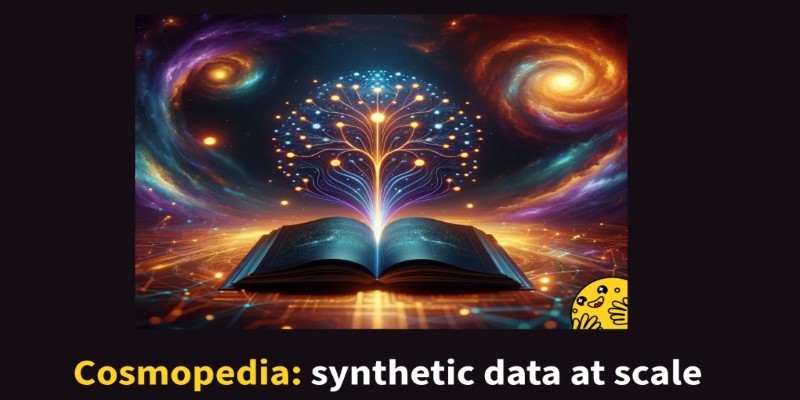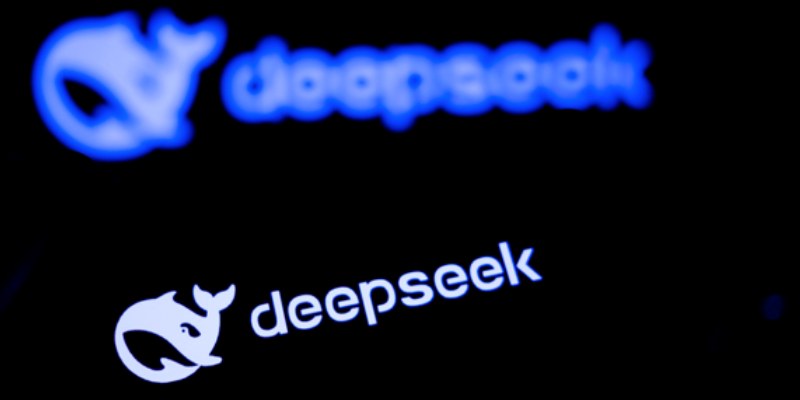Advertisement
Training large language models depends heavily on access to vast, high-quality datasets. But using real-world data brings challenges—privacy, licensing, uneven coverage, and saturation. This is where synthetic data becomes useful. Cosmopedia is a system built to generate large-scale, machine-written text that mimics the structure and scope of human knowledge.
Rather than scraping or compiling from the web, it creates custom, clean datasets for training. This article explains how synthetic data is produced using Cosmopedia, how it compares to traditional sources, and why it’s reshaping how language models are pre-trained.
Cosmopedia is a synthetic data generation framework designed to mimic the depth, range, and organization of human-written encyclopedic content. The goal isn’t to copy human writing but to create structured, machine-generated data for training purposes. With synthetic data, researchers can control the volume, scope, and content balance more precisely than with scraped sources. It also avoids legal and ethical complications tied to real-world datasets.
Cosmopedia-generated content follows structured outlines and templates, giving it consistency and clarity. It can simulate different domains—from scientific topics to cultural history—and can be generated in multiple languages. This flexibility allows the training of more inclusive and diverse language models. Unlike real data, which is limited and often noisy, synthetic data can be scaled and refined continuously.
One of the key strengths of Cosmopedia is adaptability. If a field is underrepresented in current datasets, synthetic content can fill the gap. This makes it especially useful in expanding coverage for specialized topics or low-resource languages.
Cosmopedia begins with a knowledge base—often structured sources like Wikidata or curated datasets. These act as seeds for article generation. The system doesn't use this data directly; instead, it builds article outlines from it, defining the structure, subtopics, and flow.

Next comes the template stage. Templates are customized based on topic types—biographies, scientific entries, timelines, and more. They help ensure consistency and factual structure in the generated output. Each template outlines how to introduce the subject, develop the body, and conclude the piece.
Language models then expand these outlines into full-length content. These models are tuned to maintain tone, use proper transitions, and stick to factual information from the original source. Because the content is built from structured outlines, the result is cohesive and organized—qualities often missing in scraped datasets.
A filtering step follows. Not all generated outputs are used. Systems evaluate the content for clarity, redundancy, and factual accuracy. Outputs that don't meet quality standards are dropped. Filtering can be done using classifiers or comparison methods, which assess style, length, and alignment with the original outline.
Metadata tagging is included with the output. Each piece of generated content is labelled by topic, type, and structure. This metadata helps during training, allowing models to understand context and formatting better.
The final result is a clean, highly structured, and topic-diverse dataset ready for pre-training. Cosmopedia’s ability to generate thousands of such entries daily makes it a practical solution for training large models.
While Cosmopedia solves many problems, it introduces some of its own. One challenge is repetition. Reused templates and outlines can result in similar phrasing or structure across different entries, reducing the richness of training data. To counter this, variation techniques are applied—paraphrasing tools, multiple outline options, and style shifts keep content varied.
Factual drift is another concern. If the generation becomes disconnected from the original knowledge base, inaccuracies may appear. This is addressed by grounding all content in structured sources and regularly updating templates to reflect changing knowledge.
Bias is a deeper issue. Synthetic content can reflect biases present in source data or templates. Cosmopedia systems reduce this risk by applying balancing rules during generation and actively including underrepresented perspectives or domains.
Human reviewers are sometimes involved in refining templates or evaluating filtered samples. Though the process is automated, this occasional review helps catch errors that automated systems miss. Over time, the system improves with feedback, adapting templates and constraints to produce more diverse and reliable text.
Synthetic data isn’t just a backup for when real data runs out—it’s quickly becoming a preferred approach. Cosmopedia offers a repeatable, controllable way to generate large training corpora. Instead of scraping unpredictable content, researchers can build what they need when they need it.

In future applications, hybrid datasets will likely dominate. Real and synthetic data may be mixed strategically to train models that benefit from both scale and spontaneity. For example, models could pre-train mostly on the synthetic encyclopedic text and then fine-tune it with real-world dialogues or user queries.
Cosmopedia also opens the door for specialized training. Whether for legal, medical, or technical language models, synthetic content can be crafted to match the structure and vocabulary of that field. This helps train models that don’t rely on proprietary or hard-to-license content.
Multilingual training is another area where synthetic data shines. In languages with limited online content, synthetic corpora can be created to jumpstart model training. These datasets can be tailored to reflect local culture and language use, making the resulting models more accurate and useful.
Cosmopedia’s structured approach sets it apart from older scraping-based methods. It’s not just about making text—it’s about shaping it to train more capable and responsible AI systems.
Cosmopedia shows how synthetic data can be a practical, ethical, and scalable solution for pre-training language models. Generating structured, clean, and varied content avoids the limits of scraped data and offers greater control over what models learn. Though repetition, factuality, and bias still require care, these can be addressed through design and oversight. Synthetic systems like Cosmopedia aren't just filling gaps—they’re laying a foundation for broader, safer, and more adaptable AI development. As the demand for better language models grows, tools like Cosmopedia will likely play a central role in how we build them.
Advertisement

How to fine-tuning small models with LLM insights for better speed, accuracy, and lower costs. Learn from CFM’s real-world case study in AI optimization

How to manage user input in Python programming effectively with ten practical methods, including input validation, error handling, and user-friendly prompts

Use ChatGPT from the Ubuntu terminal with ShellGPT for seamless AI interaction in your command-line workflow. Learn how to install, configure, and use it effectively

Discover how Cosmopedia is changing AI training by producing structured, large-scale synthetic content. Learn how synthetic data helps build efficient, adaptable language models

Learn how to use ChatGPT with Siri on your iPhone. A simple guide to integrating ChatGPT access via Siri Shortcuts and voice commands

Learn the different types of attention mechanisms used in AI models like transformers. Understand how self-attention and other methods help machines process language more efficiently

SigLIP 2 is a refined multilingual vision-language encoder that improves image-text understanding across languages with greater training efficiency and real-world performance

DeepSeek's data practices spark global scrutiny, highlighting the tension between AI innovation, privacy laws, and public trust

Learn about constructors in Python, their types, and rules. Discover how constructors in Python help initialize objects and simplify class design for cleaner code

Explore FastRTC Python, a lightweight yet powerful library that simplifies real-time communication with Python for audio, video, and data transmission in peer-to-peer apps

Explore how Amazon Nova Premier is revolutionizing AI models and agents with its intelligent, cloud-based innovations.

How to encourage ChatGPT safety for kids with 5 practical strategies that support learning, creativity, and digital responsibility at home and in classrooms